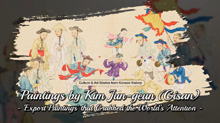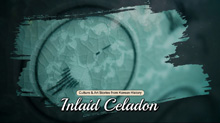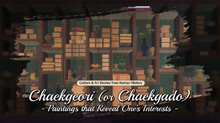The Story of Culture and Arts
- Image resource of Korean history
- Documents from History TextBooks
- Culture & Art Stories from Korean History
- Culture & Art Stories from Korean History - Korean
- National Institute of Korean History
- History net
- About the site
- Introduce
-
Numerous topics related to Korean culture and art are mentioned in middle and high school national history textbooks, but most of them are briefly described by era, making it difficult to understand their concepts, transition processes, and characteristics.
<Culture & Art Stories from Korean History> produces and provides video materials based on expert commentary on the flow, change process, characteristics and characteristics of each major topic in the field of culture and art in Korean history.

Scenario
Graceful, dazzling white porcelain. It was the heart of Joseon ceramic culture. It shined even brighter in the 17th and 18th centuries. A direct example of this is this round, white porcelain jar over 40cm tall. Commonly called a “moon jar,” it is a large, circular white porcelain jar.
Snow-white jars emerged during a time when the size of white porcelain pieces grew and porcelain-making techniques advanced significantly. Then, how were these large white jars made?
Problems arose when forming any large, round piece at once on the potter's wheel. The body would collapse during the molding or firing stages due to the weight of the clay. So upper and lower cylindrical parts were shaped separately and then combined in a top-bottom jointing method.
This jointing technique requires a high degree of skill. That is why, if you look closely at old moon jars, you can see traces of the jointing. While these jars have a rounded shape overall, one side is slightly distorted, and thus not perfectly round. That is why, the 30 surviving moon jars each have a unique shape. High-quality white clay also plays an important role in making a large, snow-white jar.
They chose only the finest white clay in the country at the time. This high-quality white clay solved the collapsing-body problem while also giving it its pure white color.
The moon jar. How were these jars used? While not completely verified, there are artifacts that help us guess their past life. On the base are inscribed characters. They reveal it to be a jar used in the kitchen in the home of Prince Yeonnyeong. From this, we can guess that they found everyday use in the kitchens of royalty or government officials.
From an Everyday Item to Art
A soft white shell. Flowing curves. These moon jars, with their distinct Korean aesthetic, are now seen as extraordinary pieces of art. While colorful and elaborate designs were trending in China and Japan, Korean moon jars struck a different path and were decorated with clean and simple designs. This focus on inner beauty added to their special quality.
In the 20th century, painters and photographers began to reinterpret the elegance and lyrical Korean beauty of these jars. To this day, the moon jar has appeared in works by many artists and is beloved by art lovers.
[Epilogue]
The moon jar, reinterpreted and reborn in various art mediums. We hope its simple beauty will inspire more artists and art lovers even in the days to come.
-------------------------------------
Advisor: Park Jungmin
Script/Storyboard: Im Seung-yeon
Editor: Jo Eunjeong, Myung Jaerim, Seo Myungwon
Narrator: Mary Katherine Chadwick
Filming: Yoon Suwon
General Editing: Park Injoon, Lee Seungsin
Illustrations: Kim Jongseok, Shim Hui-young
Recording/Music: Jo Donghyo
Logo: Min Seung-ook
Translator: Mary Katherine Chadwick, Daniel Kane, Lee Jaeyeol
Materials/Resources: National Museum of Korea, Kukje Gallery, Leeum Museum of Art, Bohyeon Museum, Whanki Museum, Kim Jong Yeong (Ceramist), Lee Jung-ae (Painter)
Production Manager: Yoon Jongwon, Kim Kiwon
Administration: Kim Sanghee
Director: Kim Kiwon
Life & Folklore
22 films-
 Paintings by Kim Jun-geun(Gisan)05:15
Paintings by Kim Jun-geun(Gisan)05:15 -
 Moon Jars03:56
Moon Jars03:56 -
 Inlaid Celadon04:13
Inlaid Celadon04:13 -
 Chaekgeori (or Chaekgado)04:38
Chaekgeori (or Chaekgado)04:38 -
 Earthenware08:28
Earthenware08:28 -
 Taenghwa, or Buddhist Paintings in the Joseon Period08:36
Taenghwa, or Buddhist Paintings in the Joseon Period08:36 -
 Lacquerware09:04
Lacquerware09:04 -
 Dyeing and Weaving08:21
Dyeing and Weaving08:21 -
 Royal Seal, Eobo07:53
Royal Seal, Eobo07:53 -
 Folk paintings07:49
Folk paintings07:49 -
 Korean Genre Paintings10:05
Korean Genre Paintings10:05 -
 Paintings of the Procession of the Joseon Tongsinsa10:09
Paintings of the Procession of the Joseon Tongsinsa10:09 -
 Dongjong, Bronze Bells of Korea08:50
Dongjong, Bronze Bells of Korea08:50 -
 Calligraphy08:32
Calligraphy08:32 -
 White Porcelain08:18
White Porcelain08:18 -
 Buncheong Ware07:48
Buncheong Ware07:48 -
 Goryeo Celadon07:54
Goryeo Celadon07:54 -
 Buddhist Paintings of the Goryeo Dynasty07:57
Buddhist Paintings of the Goryeo Dynasty07:57 -
 Clay Figures, Figurines07:01
Clay Figures, Figurines07:01 -
 Clay Earthenware06:05
Clay Earthenware06:05 -
 Paintings of the Joseon Dynasty08:09
Paintings of the Joseon Dynasty08:09 -
 Statues of the Buddha in Korea09:03
Statues of the Buddha in Korea09:03

